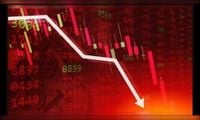On October 16, 2025, the U.S. regional banking sector was rocked by a brutal selloff, sending shockwaves through Wall Street and reigniting fears about the health of mid-tier lenders. The S&P Regional Banks Select Industry Index plunged 6.3%—its sharpest drop since the turmoil of April, according to Bloomberg. The rout was triggered by a pair of bombshell disclosures: both Zions Bancorporation and Western Alliance Bancorp revealed they had fallen victim to alleged loan fraud linked to funds investing in distressed commercial mortgages.
Zions Bancorp saw its shares nosedive over 13%, while Western Alliance Bancorp’s stock dropped more than 10%, as reported by CNBC and CNBCTV18. The wider SPDR S&P Regional Banking ETF (KRE) lost more than 6%, with all but one of its member banks finishing the day in the red. The KBW Nasdaq Regional Banking Index also slid nearly 4%, underscoring just how rattled investors were by the news.
At the heart of the crisis were loans underwritten by Zions’ California Bank & Trust subsidiary in San Diego. Zions disclosed a $50 million charge-off for a loan made to funds that invest in distressed commercial mortgages. Western Alliance, based in Phoenix, revealed it too had exposure to the same borrowers. Both banks pointed to investment funds tied to Andrew Stupin and Gerald Marcil as the alleged culprits, with accusations that the funds borrowed money to finance the purchase of distressed commercial loans—and then committed fraud.
Legal action is now underway. Zions has filed suit in California, claiming its collateral was transferred to other entities without authorization. Western Alliance, for its part, initiated legal proceedings in August against Cantor Group V, LLC, alleging the company falsified title documents and diverted funds from pledged accounts. Despite the turmoil, Western Alliance reassured investors that its collateral position remains sufficient and reaffirmed its 2025 financial guidance.
The timing of these revelations couldn’t have been worse for an industry already on edge. The bankruptcies of two auto industry-related companies earlier in 2025—First Brands and Tricolor Holdings—have cast a long shadow over the credit market. First Brands, an auto parts maker, filed for bankruptcy last month and faces pending dues worth over $10 billion. The company is also under a Justice Department criminal investigation, according to The Wall Street Journal. Tricolor, a car dealership group, also went under, prompting banks and investors to question just how robust their lending practices really are.
Jefferies, a major investment bank with exposure to First Brands, saw its shares tumble more than 10% on October 16, with the stock down over 25% for the month—its worst stretch since the onset of the Covid pandemic in March 2020. Jefferies disclosed that hedge funds it runs are owed $715 million from companies tied to First Brands, while UBS reported about $500 million in exposure.
JPMorgan Chase, the world’s largest bank by assets, was not immune to the fallout. While it didn’t have direct exposure to First Brands, it did take a $170 million charge-off last quarter from Tricolor. During the bank’s earnings call in early October, CEO Jamie Dimon issued a stark warning: “When you see one cockroach, there are probably more.” That sentiment echoed through the market as investors began to wonder if these isolated incidents were actually the tip of a much larger iceberg.
Mike Mayo, senior banking analyst at Wells Fargo, put it bluntly: “Investors are looking around for cockroaches. That’s what’s happening.” He added, “There’s not too much margin for error when you had this sort of exuberance in credit markets—very good times are when bad loans are made. And so I think it is caution winning today over optimism.”
Analysts were quick to weigh in on the implications for the broader banking sector. Raymond James analysts noted, “The optics of a large balance C&I loan to a fraudulent borrower from a bank that specializes in small balance C&I loans is not great,” suggesting the episode puts Zions’ underwriting standards and risk management policies under the microscope. Meanwhile, KBW analysts told Reuters that “following the prominent bankruptcies of Tricolor and First Brands, bank investors are rightfully on high alert for any change in asset quality trends.”
Despite mounting anxiety, some experts cautioned against reading the events as a sign of an impending systemic crisis. “Bankruptcies and fraud are natural in markets, but it doesn’t always lead to something systemic,” said David Wagner, head of equities at Aptus Capital Advisors. Others, like Peter Corey of Pave Finance, pointed to the “opaque” nature of the private credit market, warning that a lack of transparency can fuel a major wave of concern even when the underlying problems might be contained.
Both Zions and Western Alliance have tried to calm nerves. Western Alliance emphasized that its “total criticized assets were lower than on June 30,” while Zions characterized the situation as isolated and said it would encourage its counsel to have an independent review. Still, as Brian Mulberry of Zacks Investment Management observed, “Zions faces the challenge of showing that this is a one-off event and not indicative of broader supervision or credit control weakness.”
The crisis didn’t stop with the banks themselves. Alternative asset managers also took a hit: Blue Owl Capital dropped more than 7%, Ares Management and Blackstone fell more than 6% and 3% respectively, Apollo Global Management lost over 5%, and Carlyle Group declined around 4%. Even the broader stock market felt the pain, with the S&P 500 ending the day lower, dragged down by the turmoil in regional banks.
For many, the episode brought back memories of the 2023 banking crisis that began with the collapse of Silicon Valley Bank. While the bull market in stocks and a booming private credit market had helped calm investor nerves earlier this year, Thursday’s events served as a stark reminder that the sector remains vulnerable to shocks—especially when confidence is already fragile.
As Timothy Coffey, associate director of depository research at Janney Montgomery Scott, summed up: “Today, I think, the risk to the bank space is idiosyncratic. The risk to the insured bank space for private credit could be more systemic, as well as the risk to credit quality from a weakening economy.”
For now, both banks and their investors are left to hope that the latest round of bad loans and alleged fraud truly are isolated incidents. But as the old saying goes—and as Jamie Dimon reminded everyone—when you spot one cockroach, you can’t help but wonder if there are more hiding in the shadows.

